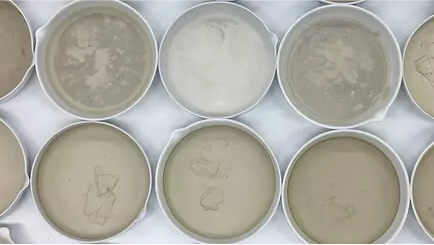Sediment Laboratory (SedLab)
Contact:
Web:
Infrastructure belongs to:
Tracking Earth surface processes through size and shape of sediment particles
In the SedLab, we analyse the compositional properties of sediments by measuring the full range of grain-size distributions from a few nanometers to centimeters and by determining the shape of single grains. This allows us to determine the processes that have generated and transported sediments.
The SedLab is equipped to measure large batches of samples in either dry of wet conditions. The CamSizer allows us to determine the size and shape distributions in coarser (non-cohesive) sediments. It is particularly adapted to analyse sand-size aeolian or fluvial sediments. The laser diffraction analyser Horiba LA950V2 allows us to measure the grain-size distribution of sediments in solution. This is required for finer (cohesive) particles and if often applied to analyse mud- to silt-sized sediments of various origin.
A pretreatment is sometimes required to remove organic matter or (biogenic) carbonates or to disperse cohesive (clay) particles. This step can be performed in our lab in clean fume-hoods. Our team can advise on methodological requirements and can help develop specific measurement protocols. We can also assist with the statistical analyses of results as well as their visualisation.
Any inquiry about analytical possibilities and discussions of project ideas should be directed to C. Blanchet.
Categories
Disciplinary Keywords
Selected infrastructures
Instrumentation
Laboratory instrumentation
Instruments
-
Centrifuge
-
Drying Cabinet
-
Filter
-
Laser Particle Size Analyzer
-
Particle Analyzer
-
Shaker
-
Sieve Shaker
Sieve-size Analysis: Analytic technique determining the distribution of the different sizes of particles in soil, sediment, or rock samples by measuring the percentage that will pass through mesh holes of known size. (Soure: USGS; https://apps.usgs.gov/thesaurus/term-simple.php?thcode=2&code=1062)
